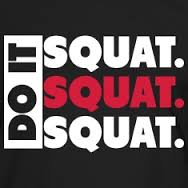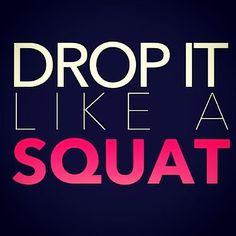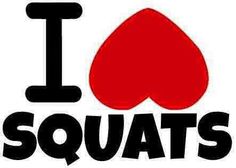 If nothing else, as you get older is important to perform squats every day. Squatting is the #1 way to prevent bone fractures as you age.
If nothing else, as you get older is important to perform squats every day. Squatting is the #1 way to prevent bone fractures as you age.
Squatting is one of the most fundamental movements in human life. Think of how many times you do these movements during the day:
- Getting up from a chair or couch
- Picking something up off the ground
- Getting out of a car
- Getting out of bed
Since the squat is used so often in daily life, being able to do that motion is quite important for quality of life and independence as you get older. That is why it’s so important to practice squatting. When done repeatedly, it’s a great strengthening exercise because it uses most of the larger muscles in the legs. Plus, research has shown that performing squats properly and on a regular basis will improve knee stability; by strengthening and tightening the connective tissue around your knees. 
Here are some more reasons for why to squat:
- It’s a Functional Movement.
Practicing the squat correctly is important. Our body recognizes patterns of movement, and the more we can practice good movement patterns, the better off we will be. When you perform squats, you build muscle and help your muscles work more efficiently. If you practice proper form, it will translate into proper form during everyday movements, which in turn, will prevent injuries.
- Maintain Mobility and Balance.
Strong legs are crucial for staying mobile as you get older, and squats are a great for increasing leg strength. They also work out the core stabilizing muscles, which will help you to maintain balance, while also improve the communication between your brain and your muscle groups; this will help prevent falls. By moving your body through a full range of motion, you’ll build strength & boost flexibility. Deep squatting also helps to increase your range of motion in the entire hip complex. The benefit to this is reduced back pain and an easier time getting around in daily activities.
- Prevent Injuries.
Squats build your glutes, hamstrings, and quad muscles. They also help improve range of motion in the ankles and hips. Increasing the muscles surrounding your knees and hips is a great way to reduce your chance of injury as we age or train.
- Squats make your whole body stronger.
This includes everything from your muscles, to connective tissue, to your bones. By performing squats you can increase mineral density which helps fight diseases such as osteoporosis.
- Squatting can help Running and Cycling.
Studies from the National Library of Medicine and National Institutes of Health confirm that the stronger your squat, the faster you can run. Many endurance athletes think that squatting and other forms of resistance training will make you “bulky” or slow you down, but this isn’t the case. When those athletes include resistance training in their regimen, marathoners improve their running and cyclists improve their efficiency on the bike because of the hip flexion strengthening.
How to Perform a Squat:
- Warm up- maybe do some light calisthenics, foam rolling to improve soft tissue quality, as well as some dynamic stretching.
- Stand with your feet about shoulder width apart.
- Keep your back in a neutral position, and keep your knees centered over your feet
- Slowly bend your knees, hips and ankles, lowering until you reach a 90-degree angle or below, find good depth.
- Think about your weight being back over your heels and chest up.
- Return to starting position. Watch a video of the Air Squat.
- Breathe in as you lower, breathe out as you return to starting position.
- Repeat 15-20 times, for 2-3 sets for beginners (do this two or three times a week). As your become more advanced you can always add some weight by holding a Kettlebell or dumbbells as you squat.
Happy Squatting!

